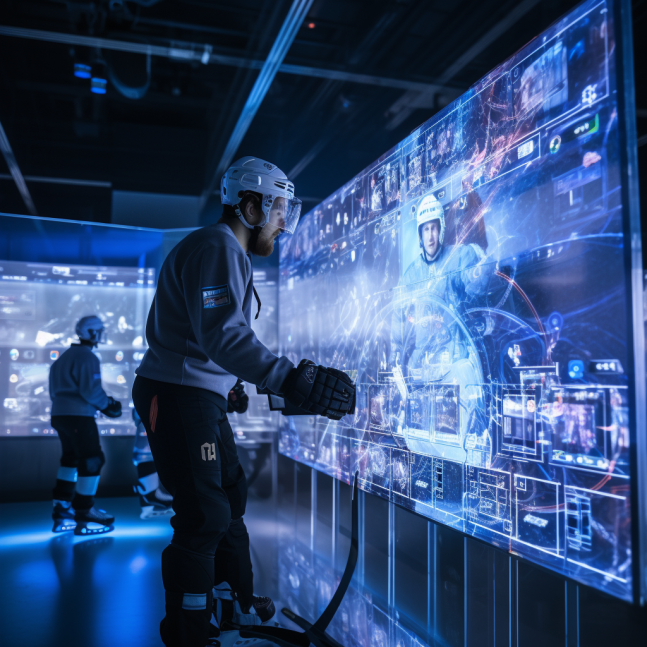
Ice hockey, a sport steeped in tradition, has always demanded a unique blend of skill, strategy, and athleticism. In recent years, however, the game has been transformed by the integration of advanced technology. From player development to fan engagement, technological innovations are reshaping every facet of the sport, making hockey faster, smarter, and more accessible than ever.
The Evolution of Training: Precision and Data-Driven Development
Gone are the days when training relied solely on intuition and experience. Today, technology is giving players and coaches unprecedented insight into performance.
One of the most significant advancements is the use of wearable technology. Devices like GPS trackers and heart rate monitors collect real-time data on player movements, speed, and exertion levels during practices and games. Coaches can use this information to tailor training programs, prevent overtraining, and monitor recovery times.
Video analysis tools have also become indispensable. Platforms like Hudl and Coach’s Eye allow coaches to break down every play, frame by frame, highlighting areas for improvement. Players can review their skating techniques, puck handling, and positioning, making adjustments with precision that was previously unimaginable.
Smart Equipment: Enhancing Performance and Safety
The introduction of smart equipment is another game-changer. Skates with embedded sensors can measure stride efficiency, balance, and edge usage, helping players refine their techniques. Similarly, smart pucks equipped with tracking chips provide data on puck speed, trajectory, and movement during games, offering insights into shot accuracy and passing precision.
Safety has also benefited from technological advancements. Helmets with impact sensors now alert medical staff to potential concussions, ensuring quicker and more effective injury management. This focus on player safety has the potential to extend careers and reduce long-term health risks.
Analytics and Strategy: Winning with Data
Analytics is becoming a cornerstone of hockey strategy. Teams now employ data analysts to study everything from player tendencies to opponent weaknesses. Metrics like Corsi and Fenwick, which track shot attempts and puck possession, are being used to evaluate team performance and inform in-game decisions.
The NHL’s adoption of puck and player tracking systems has taken analytics to the next level. These systems provide live data on skater speed, time on ice, and shot metrics, giving broadcasters and coaches a wealth of information to enhance their strategies and storytelling.
Fan Experience: Bringing the Game Closer
Technology isn’t just transforming the way the game is played—it’s also revolutionizing how fans experience hockey. Augmented reality (AR) and virtual reality (VR) are bringing fans closer to the action than ever before. AR overlays on broadcasts provide real-time stats, while VR experiences allow fans to "step onto the ice" from the comfort of their homes.
Streaming platforms have also made hockey more accessible. Services like ESPN+ and NHL Live offer fans the ability to watch games on demand, while social media platforms provide highlights and behind-the-scenes content that keeps fans engaged year-round.
Looking Ahead: The Future of Tech in Hockey
As technology continues to evolve, the possibilities for its application in hockey are endless. Artificial intelligence (AI) could soon be used to predict player performance and optimize team lineups, while advancements in biomechanics may lead to even more personalized training programs.
At its core, hockey remains a sport driven by passion and skill. But as technology becomes increasingly integrated into the game, it’s clear that the future of hockey will be a fascinating blend of tradition and innovation.
Whether it’s a rookie perfecting their stride with sensor-equipped skates or a coach devising strategies with real-time analytics, technology is ensuring that hockey remains one of the most exciting sports on and off the ice.
 AYCANELorenz Wueest
AYCANELorenz Wueest

